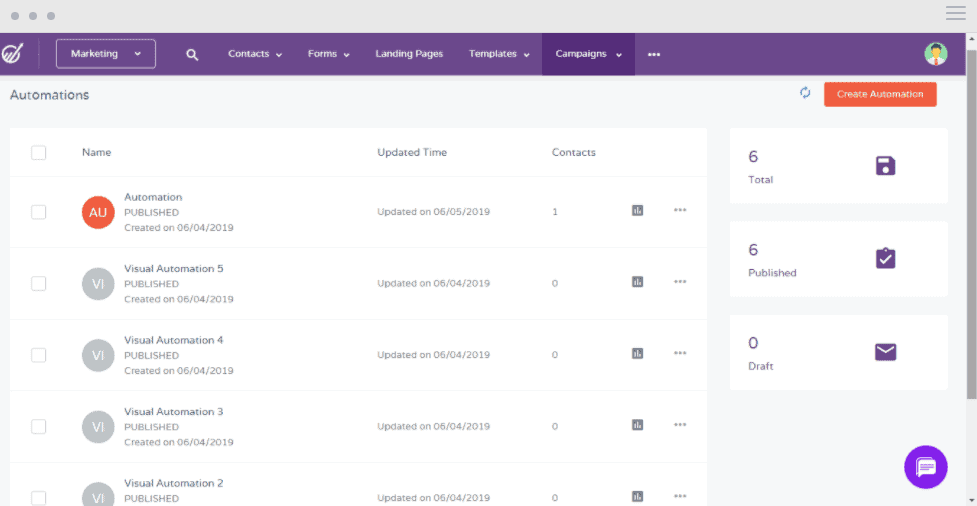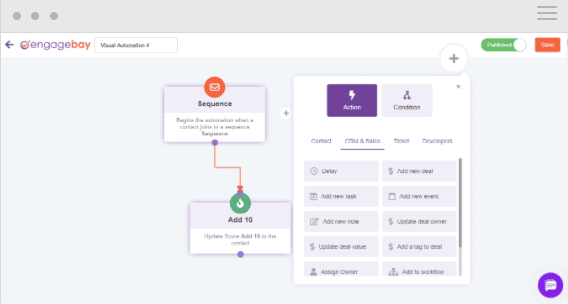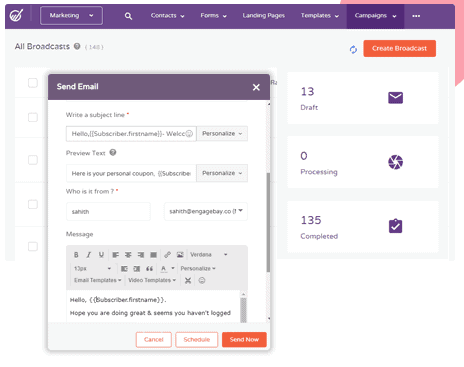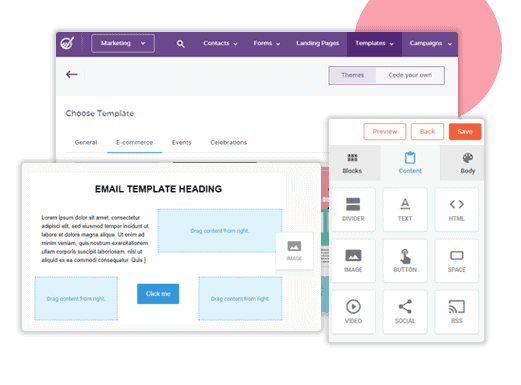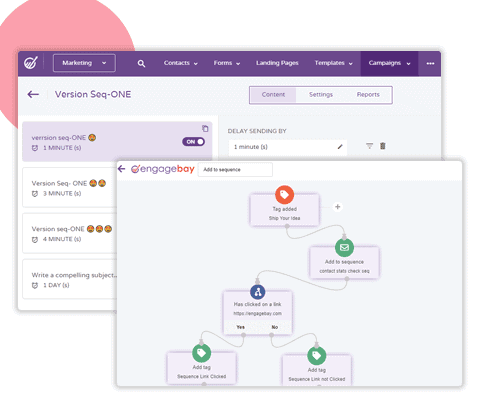Let’s discuss real estate email marketing in this article. The cold email is an incredibly daunting one to send.
Sure, there’s less human interaction than if you were making a cold call, but the chances of rejection are just as high, if not higher.
After all, spam filters exist for a reason. So does the little red delete button in most email programs and platforms. If someone doesn’t want to see your email, they can make it disappear in a second.
Even if you discovered that a lead was interested in buying or selling a house, if they didn’t deal with you directly, they may find your out-of-the-blue email daunting and well, a little creepy.
What happens then? You guessed it. The email gets deleted and you might get blocked for your efforts.
Listen, even marketers struggle to write the perfect emails that capture the attention and captivate the interest of a real estate lead.
You’re probably asking then, being a real estate agent, how would you fare much better?
Well, for one, you might use software that makes real estate email marketing a breeze, like EngageBay.
EngageBay’s real estate CRM helps you better organize your contacts, track pending engagements, and close more deals all while you spend more time establishing good relationships with your clients.
Second, you might harness the power of real estate email marketing.
Market Your real estate services and nurture your audience with EngageBay’s free real-estate CRM
In this post, we’ll explain everything you need to know about real estate email marketing, including why you should use it and how to select the right software.
We’ll also provide 10 real estate emails that will get your leads interested.
>>Real Estate CRM: Everything You Need to Know (Complete Guide)
Table of Contents
Why Use Email Marketing for Real Estate?
So first thing’s first. As a real estate agent, is email marketing even really for you?
Most definitely! Through real estate email marketing software, you can achieve a variety of objectives. Here’s an overview.
Establish Stronger Professional Relationships
In real estate, your customers are everything. They can act as referrals that introduce you to new home buyers and sellers.
Also, if a customer used your services for buying their home, you might be the first one they call on when selling the home.
By segmenting your customers into buckets or groups and then sending them content that’s tailored to their needs and interests, you nurture those professional relationships.
Save Time Through Automation
The job of a real estate agent is never done. If you constantly find yourself with too many tasks and not enough time, real estate email marketing can help.
Through automation, you can schedule duties like appointment booking, email sending, following up, and the like!
Boost Your Sales
Per 2018 data from the National Association of REALTORS Research Group, up to 93 percent of customers in this realm most favor emails for communication.
That makes sense considering emails are fast and can be sent and received just about anywhere and on any device.
Giving your customers what they want can lead to an influx of sales for your real estate firm!
Build Your Database
By encouraging your leads and customers alike to opt into your firm’s email experience, you have an active leads database you can use.
Read also: What is a CRM in Real Estate? Cheat Sheet for Realtors
Enhance Your Email Marketing
Want to make your emails more impactful? Check out our beautiful, easy-to-customize recruitment and real estate email templates. Designed to boost engagement, these templates from EngageBay will help your emails stand out. Just customize the images, headings, and CTAs for your brand, and hit send in a few minutes!
What are the benefits of Real Estate Email Marketing
If you’re still not totally convinced that email marketing is right for your real estate firm, allow these benefits to change your mind. We think they will!
Personalization and Targeting
It was once that personalizing communications was a nice way to stand out from the pack.
Now customers and leads alike expect it. This Accenture report mentions that as many as 91 percent of people will choose the brands who send them personalized content and offers.
Through real estate email marketing, you have opportunity after opportunity for personalization. This will delight and satisfy your audience.
EngageBay helps you personalize your emails for the best response rates
Time Savings
Automating your daily tasks and creating a sales funnel that’s workable within the context of your real estate firm will pay back dividends.
You’ll have so much more time on your calendar that you can devote to pursuing more clients.

Analytics
Last but certainly not least, using real estate email software will allow you to generate analytics for each campaign you launch.
If one was successful, you can take a deep dive into the data to see why that was.
When campaigns underperform, you can review areas in which you weren’t as stellar and then bolster them for more success next time around.
👉 Elevate your email marketing with our free email templates designed to boost engagement and conversions.
Read also: 14 Real Estate Lead Generation Tips That Will Have Your Phone Ringing
How to Pick the Right Real Estate Email Software
Okay, you’re ready to begin using real estate email marketing for your firm, but how do you select the right software? Make sure the software has the following features:
- Email newsletter templates: You should be able to craft impressive-looking, appealing newsletters for each of your audience segments in your email software.
- Automation: We’ve covered the importance of automation already. The automation workflows should be easy to use so even beginners can create a simple workflow.
- Drag-and-drop: From building opt-in forms to newsletters and even email templates, drag-and-drop features make it all so much easier.
- Analytics: You must track how your campaign has performed, and analytics allow you to do that. You want both basic and in-depth views into which KPIs are driving your business.
EngageBay’s Marketing Bay includes all the above features as well as video templates, push notifications, SMS marketing automation, site messaging, marketing automation, customizable forms, and so much more. You should strongly consider EngageBay for your real estate email software.
Use EngageBay’s simple drag and drop interface to create a killer real-estate email template
10 Types of Emails Real Estate Agents Need to Start Sending
Ready to get emailing? Here are 10 types of emails for real estate agents to send to leads today!
1. The Welcome Email
Whether you prefer calling it a real estate introduction email or a welcome email, it serves the same purpose: welcoming leads.
The real estate marketing email should be short and sweet. Explain a bit about who you are, what you do, and why you’re the expert the lead should trust.
Then tell the lead what you can do for them, be that helping them buy or sell a house or offering other valuable real estate services.
You’re not asking the lead for much at this point. There’s typically no need to respond to a welcome email unless you mention they can write to you with any questions.
By adding too much to this email, like blog links or other content, you obscure the intention of the email.
2. The Follow-up with No Response
You’re pleased with your welcome email campaign and you send it out to the lead. What do you do if you don’t hear from them?
This isn’t the time to give up, not yet at least. At this early phase, it’s not unusual to get no reply from the lead. That’s why you might send a real estate follow-up email.
Now, it’s worth mentioning that you should only follow up if you and the lead have communicated before. This could have been by phone or in person.
They may have even written you an initial email but now seem to be getting cold feet.
If you have not communicated with a lead and they don’t respond to your welcome email, move on. They’re clearly not interested in your services.
Now that you know whether it’s appropriate to send a follow-up message, what do you include in it?
You want to mention again what your services are and how you can help the lead.
Provide more information that wasn’t in your first email campaign so you’re not just regurgitating the same script.
Make it convenient for the lead to contact you. Tell them they can write you back via email, but they don’t have to. Include your phone number and let them know your availability.
There is always a chance the lead just doesn’t check their email much. Give the lead the benefit of a doubt at this point.
The more ways they have to contact you, the better.

3. The Follow-up with Response
By this point, you may get a response from your welcome email.
If the lead was the one who initially reached out to you and you respond back, then you’re on track to create a positive dialogue that will hopefully end in them working with you.
The goal of this email is to set up a time where you can talk more. This may be done in a face-to-face meeting or over the phone based on what’s more convenient and comfortable for the lead.
You might offer them a custom home valuation report to help them in their real estate decisions.
Otherwise, you might just provide your phone number as you did in the email above to set up a call. The lead can then confirm that the day and time you requested for the phone call works for them.
4. The Second Follow-up Email (with Response or No Response)
If the lead did get back to you and you meet with them, you’ll send a second follow-up email.
This should ideally be post-meeting or phone calls. You might send more information pertaining to the lead’s real estate needs in this email.
If you didn’t send a report or other information during your previous contact, you can do so now. It’s not mandatory at this point, though.
Remind the lead that you’re here to guide them in their real estate decisions in the coming days and weeks.
Reiterate that you’re available by phone or by email when they need to contact you. Then let things rest for a few days.
If the lead responded to your first few emails but went cold, you should again send a second follow-up.
In this email, you want to remind the lead that you can make buying or selling their home easier for them.
Tell them you want to give them pertinent real estate data, such as a custom home valuation report, but you can’t do so without more information from them.
Provide your contact information again.
The ball is now squarely in the lead’s court. If they don’t respond after this second follow-up attempt, it’s time to call it a wash and focus on other leads who are more interested.
Free up your time by scheduling follow up drip email campaigns with EngageBay’s email sequences
5. The Action Email
Okay, now we can get to the meat of the matter.
The lead is interested in your services, so it’s about time you start providing them. You might offer the lead referrals or mention their need for a lender if they want to pre-qualify for a loan.
Before you go providing the lead’s contact information to these third parties, you have to ask the lead for permission to do so first.
Not only will this prompt another (almost) sure response, but it gets the ball moving on the deal.
6. The Listing Feedback Email
By this point, the lead’s listing should be live if they’re selling. If they’re buying a house, you should have sent them several deals in their areas that fit the parameters you two discussed in past communications.
Now comes the part where you ask for something from the lead.
In this listing feedback email, you’re simply requesting that the lead get back to you with their thoughts.
If they’re selling a home, they may have more photos or other information they want to be added to the listing so it gets the most attention.
If they’re buying a home, then feedback about the listings you sent will be especially pertinent.
Feedback emails such as these are useful for several reasons. First, they allow you to gauge how well you’re serving the lead and helping them meet their real estate goals.
Second, they’re keeping the line of communication open and the deal moving along. The lead, if they’re interested in seeing a house, will set up a meeting with you to make it happen.
7. The Annual Home Sales Report Email (or Other Content)
If you haven’t already provided any reports or content to your lead, it’s time to do that next.
The lead is now at the phase where they’re making a decision on buying or selling a house.
Any information you can give them that makes that choice easier for them will be much appreciated.
You’re not necessarily looking for a response with these emails. The best you can hope for is that the lead subscribes to your real estate firm’s newsletter (so make sure you provide an opt-in link).
This way, they can continue to get useful information about buying and selling homes.
By providing valuable content to the lead, you’re also hopefully pushing them into closing a deal.
8. The Review Request Email
At this stage of the process, the lead has either bought a house through you or sold theirs. You received your commission as well.
This is a celebratory time, but you still have more work to do. After the lead gets comfortable in their new home, you should send them a series of emails. The first is a request for a review or testimonial.
The way you frame this request can be the difference between it being completed or ignored. After all, the lead got their house, you got your money, so you don’t owe each other anything at this point.
That’s why you have to frame the review or testimonial request in such a positive light.
Tell the lead that they’re one of your top customers. If they agree to provide their insight and experience with your real estate firm, it can help others enjoy the same kind of seamless, simple experience.
Not every lead will agree to leave a testimonial, and that’s okay. A few truly positive reviews is sometimes all it takes to drive more deals.
9. The Client Retention Email
How do you make leads to long-term customers? With a client retention email, of course.
It’s important to strike while the iron’s hot.
According to data from Regal Creative, within a single year, most people (up to 70 percent) will have forgotten the real estate agent they worked with to buy or sell their home. Ouch!
It’s not all bad news, though. 2016 data through Contactually uncovered that just as many buyers, 73 percent, would happily work with the same realtor if the situation presented itself.
If not, they’d at least suggest a friend or family member choose the real estate agent.
By providing the lead with valuable tools, insights, data, content, and other information—ideally through a real estate newsletter—you can stay at the top of their recommendation list.
10. The Thank-You Email
In trying to keep the client in your professional life, you might forget to send one of the most important emails of the real estate drip campaign, the thank-you email.
In this email, which is short and sweet as well, you’re simply thanking the lead for using your real estate services. Again, offer further services if they need them in the near or long-term future.
This ends the exchange on a great note.
If the buyer or seller needs real estate advice somewhere down the line, you may be the first one they go to.
Conclusion
Real estate marketing emails don’t have to be a struggle that yields you no replies from a lead. If you’re not getting the answers you want, you just might have to change the way you communicate with your leads.
By sending the above 10 real estate marketing emails and getting leads registered to your real estate agent email list, you can have a strong influx of free leads ready to do business with you.
Here are a few other Email Marketing blogs you may like:
👉 Have you tried our email templates? Share your experience in the comments below, and let us know how they worked for your campaigns!

